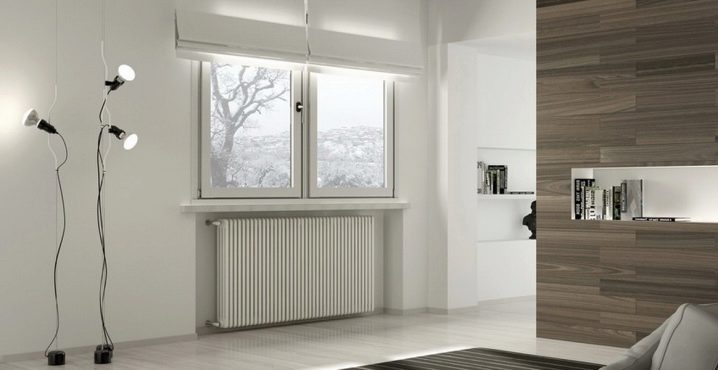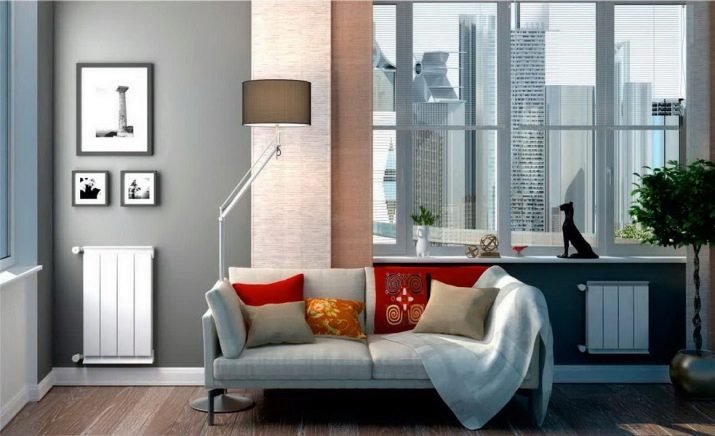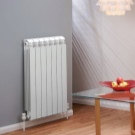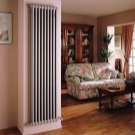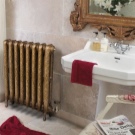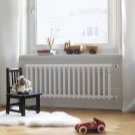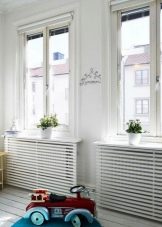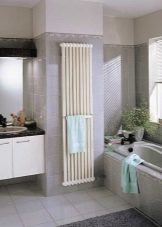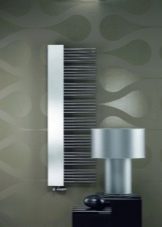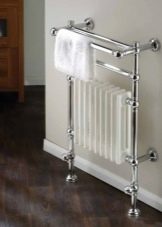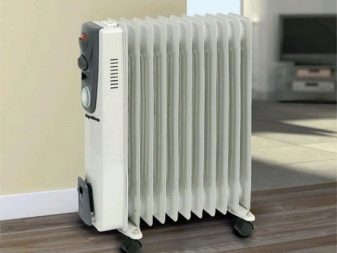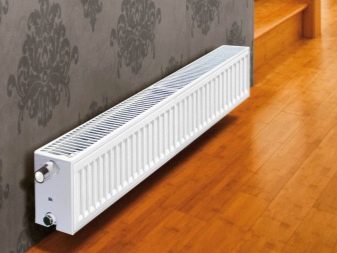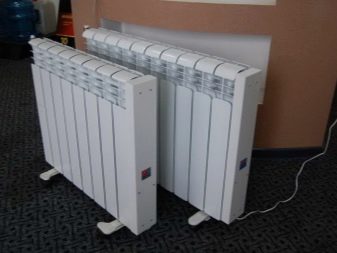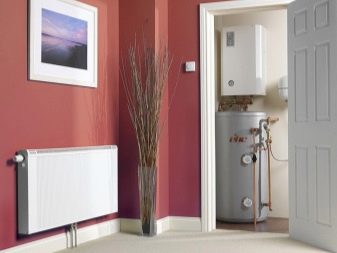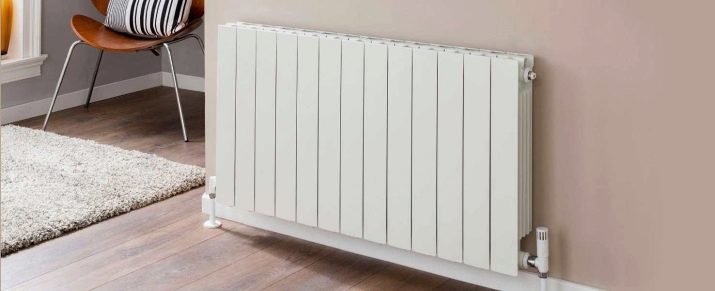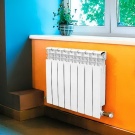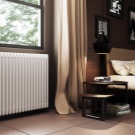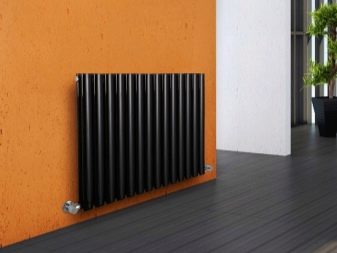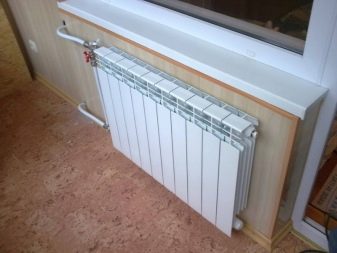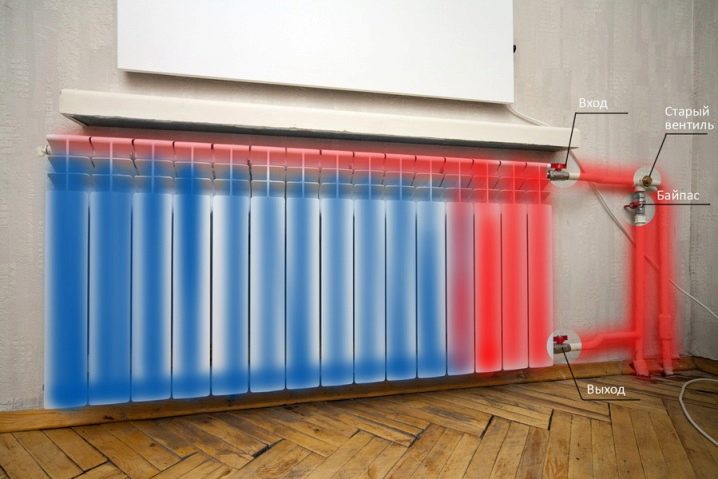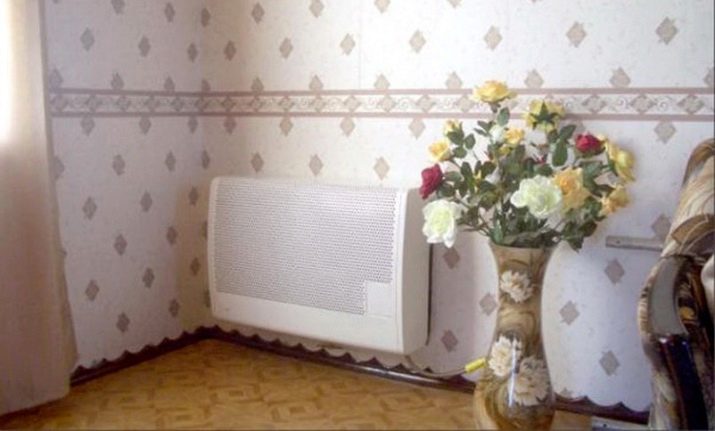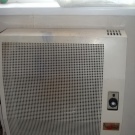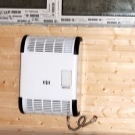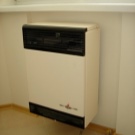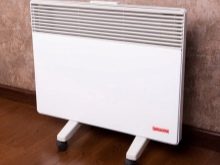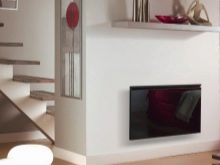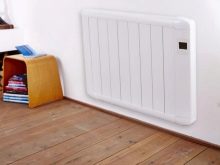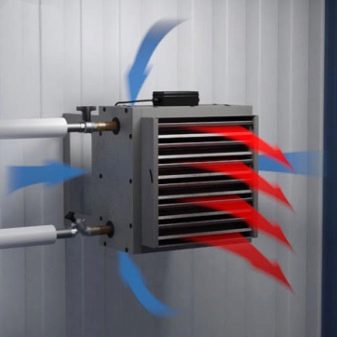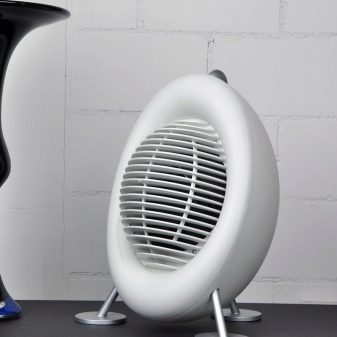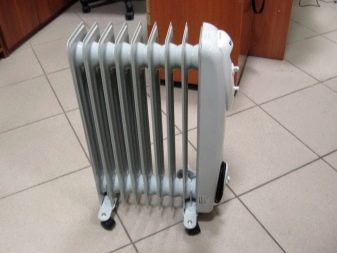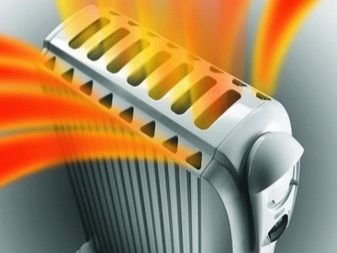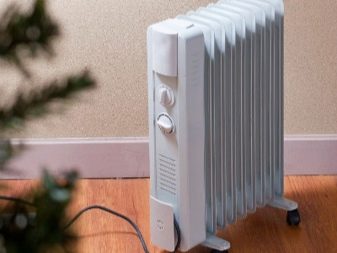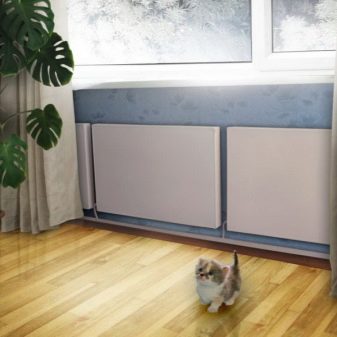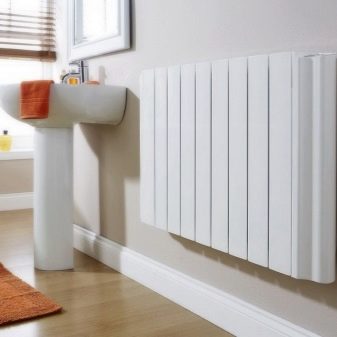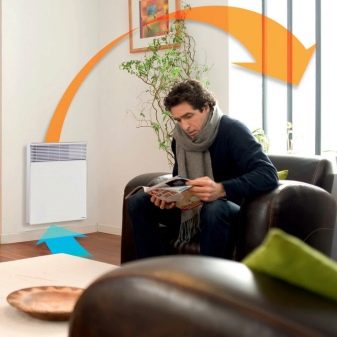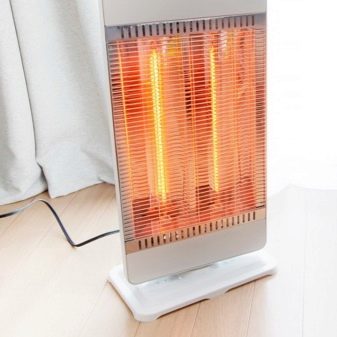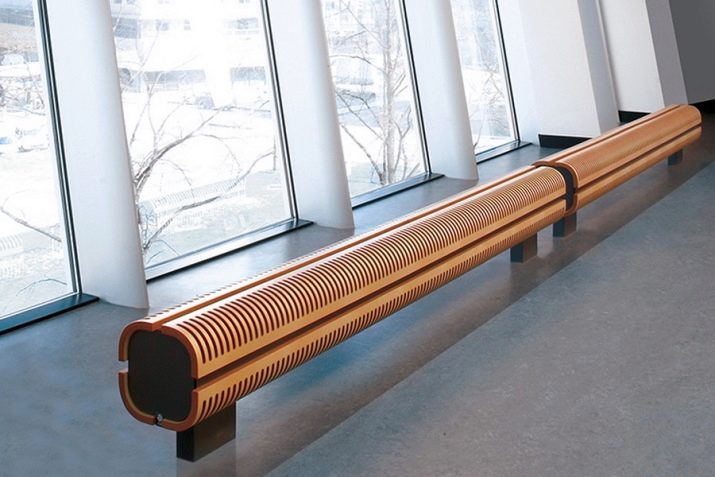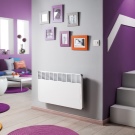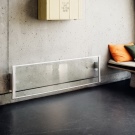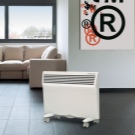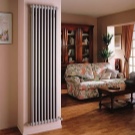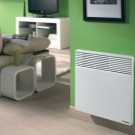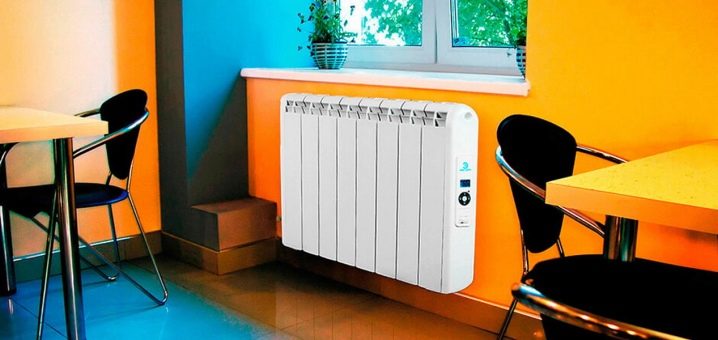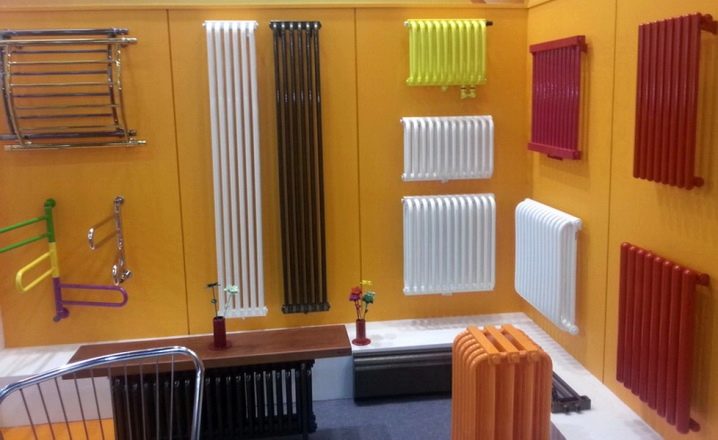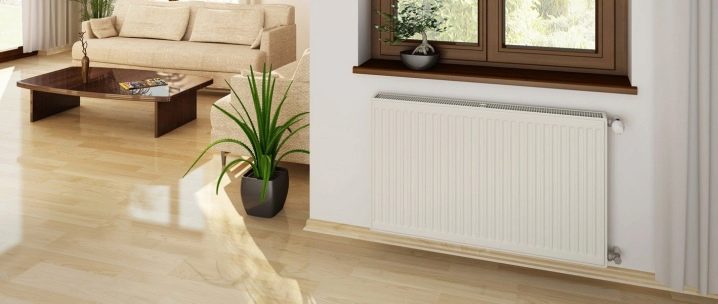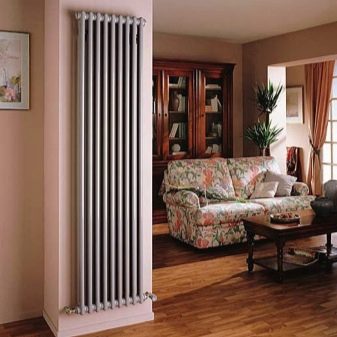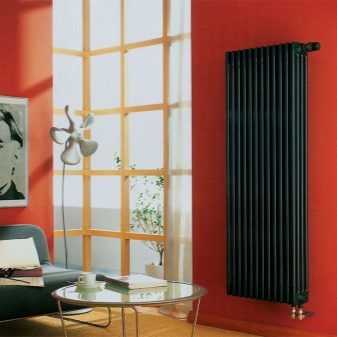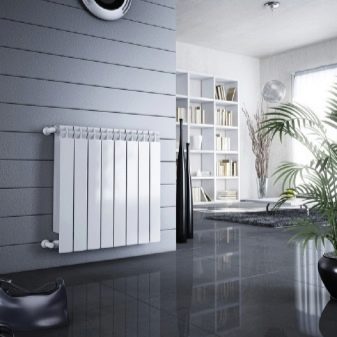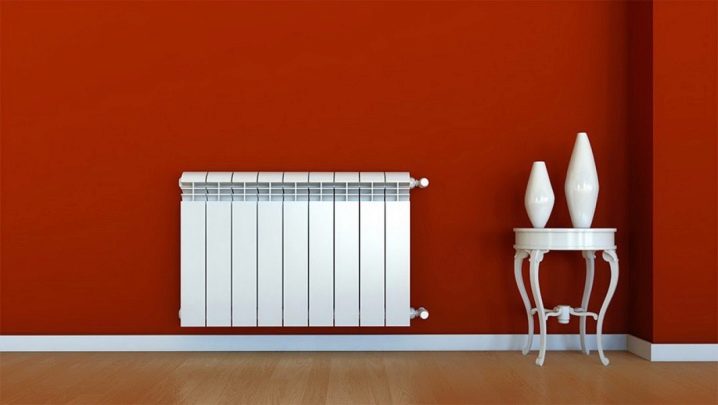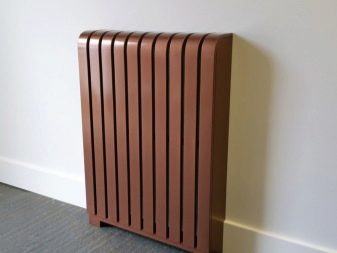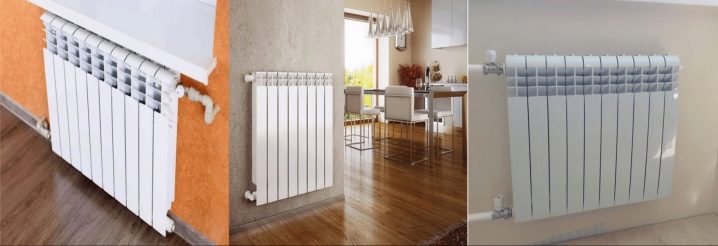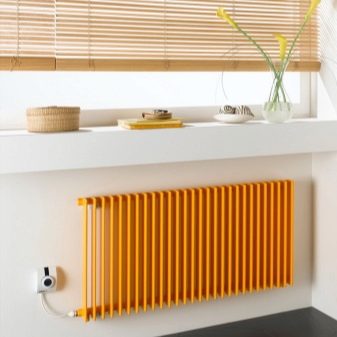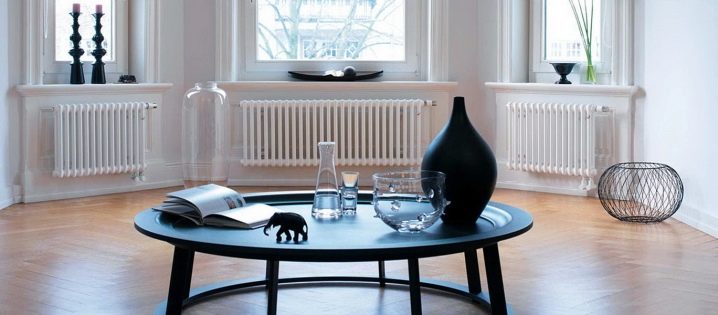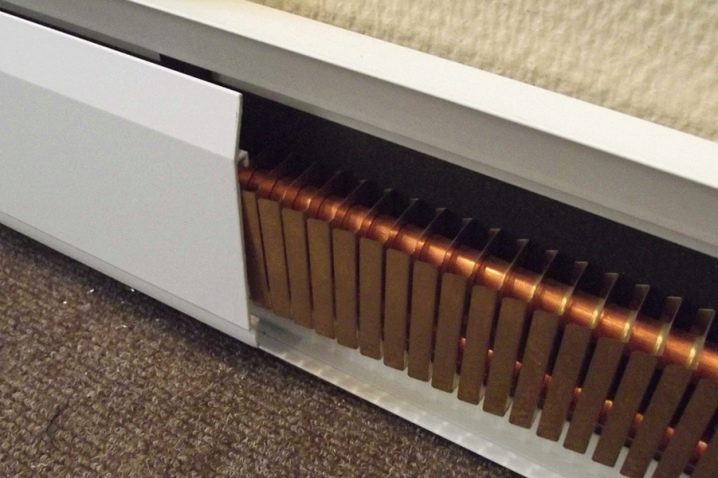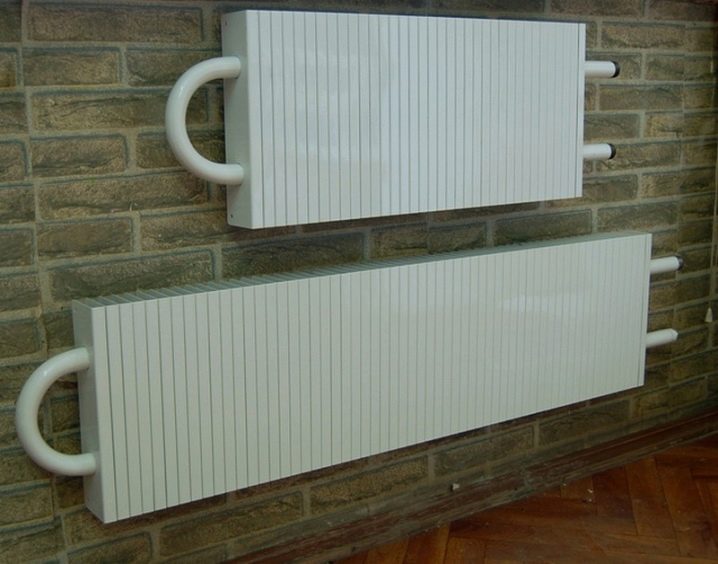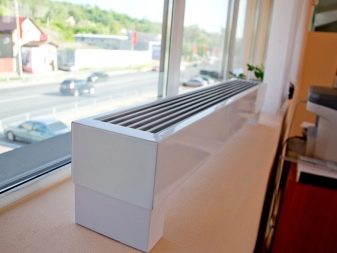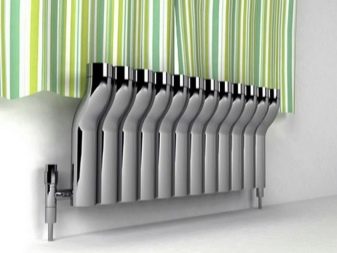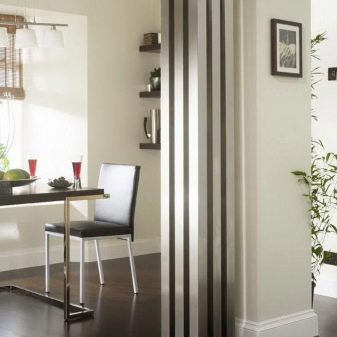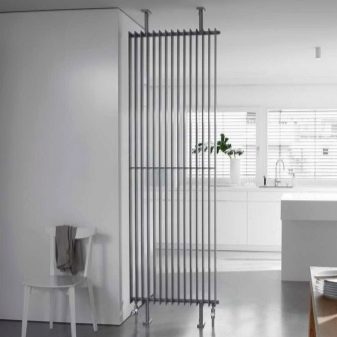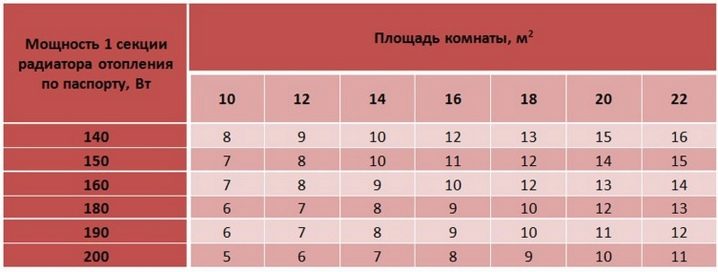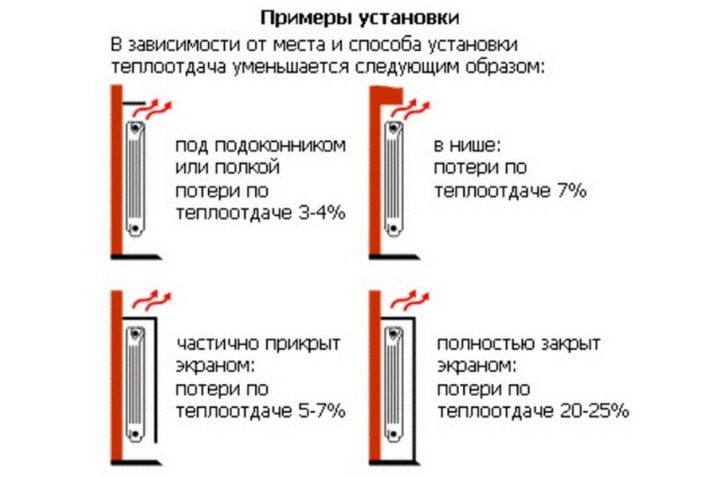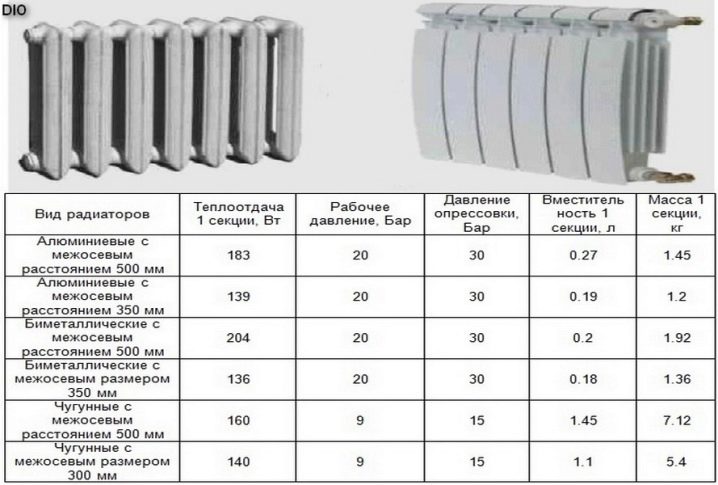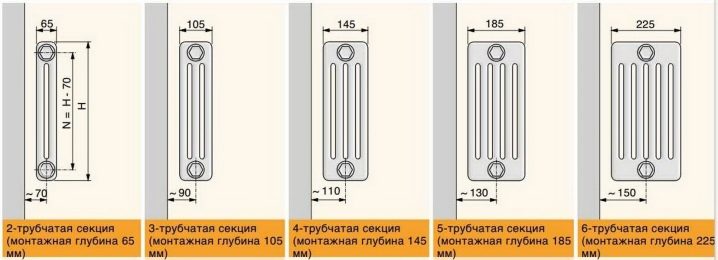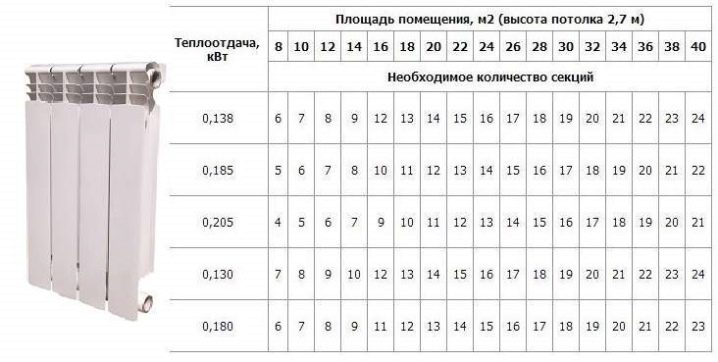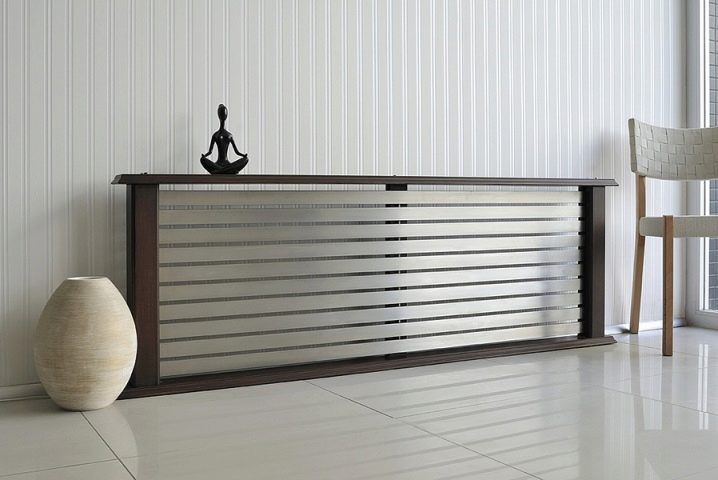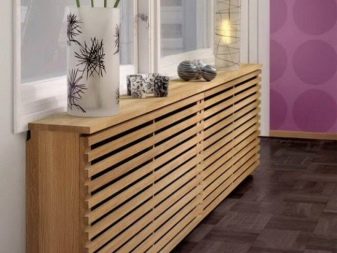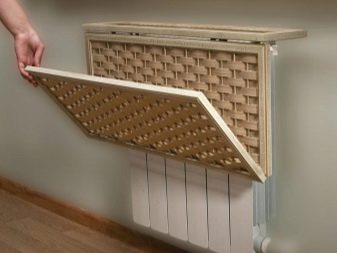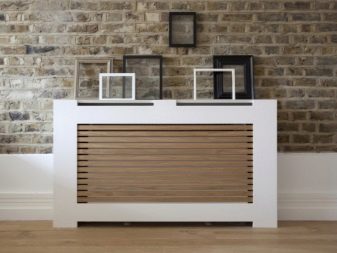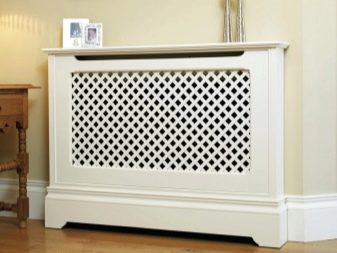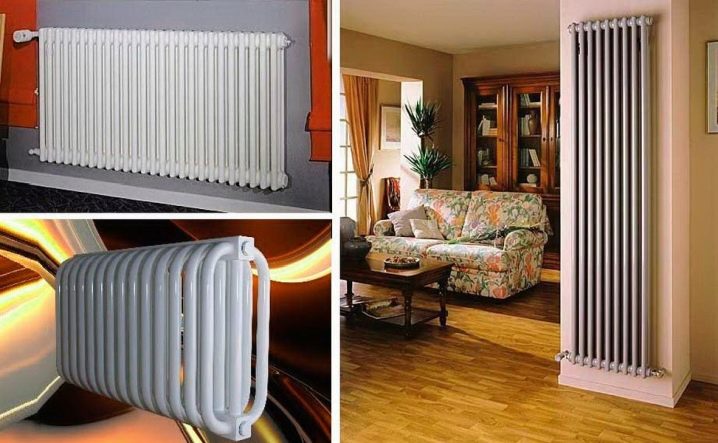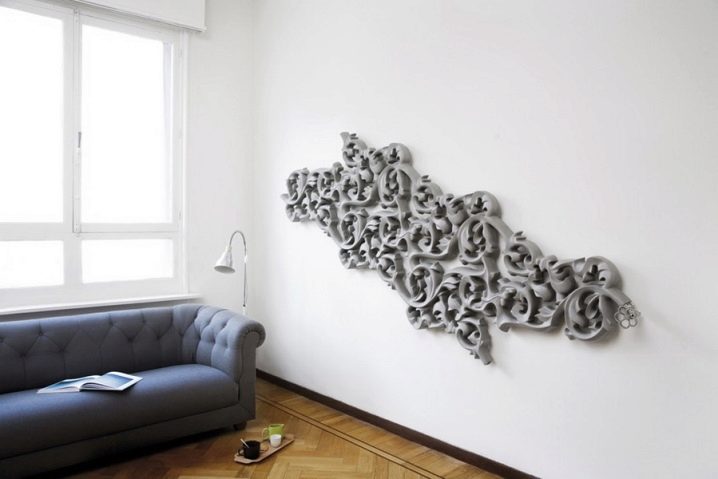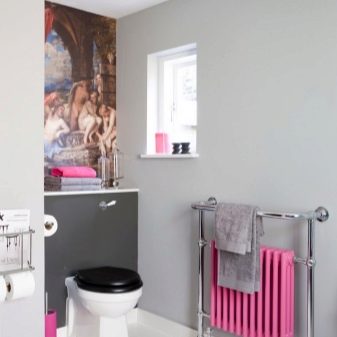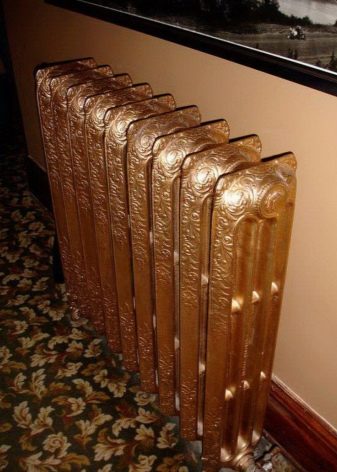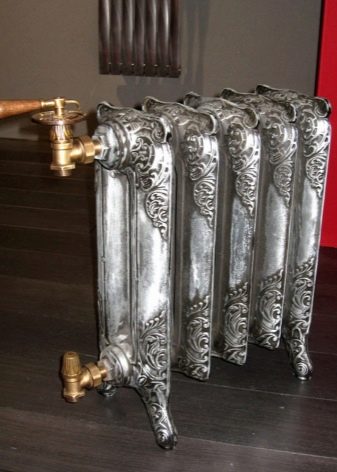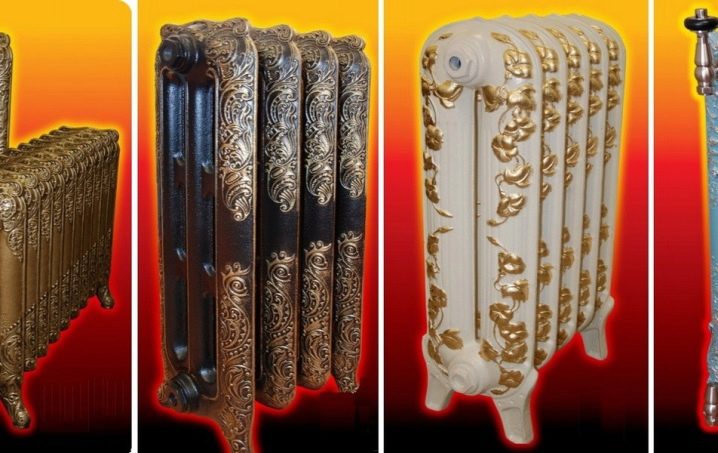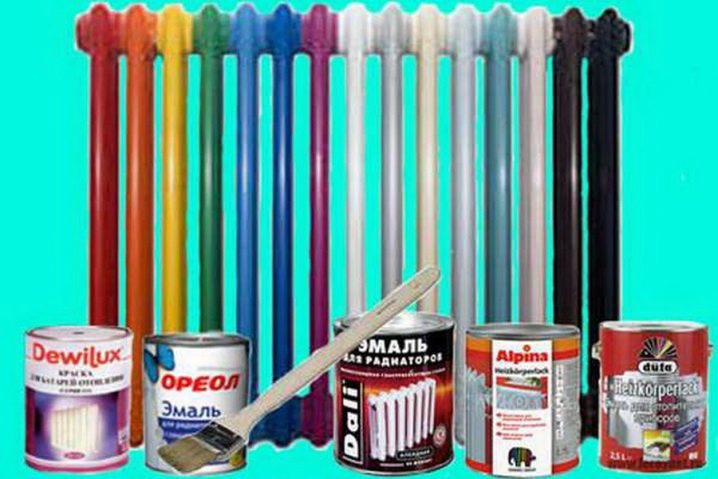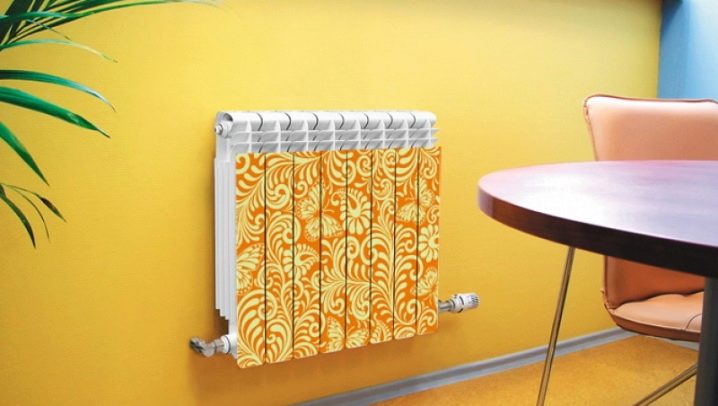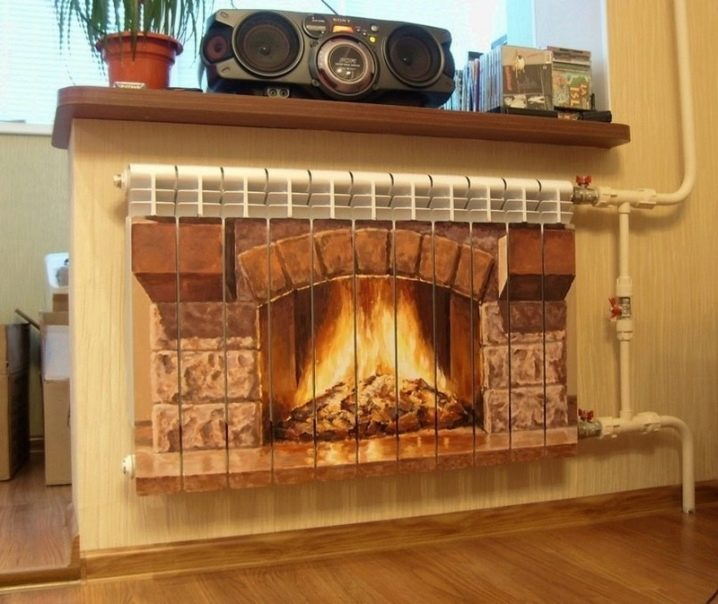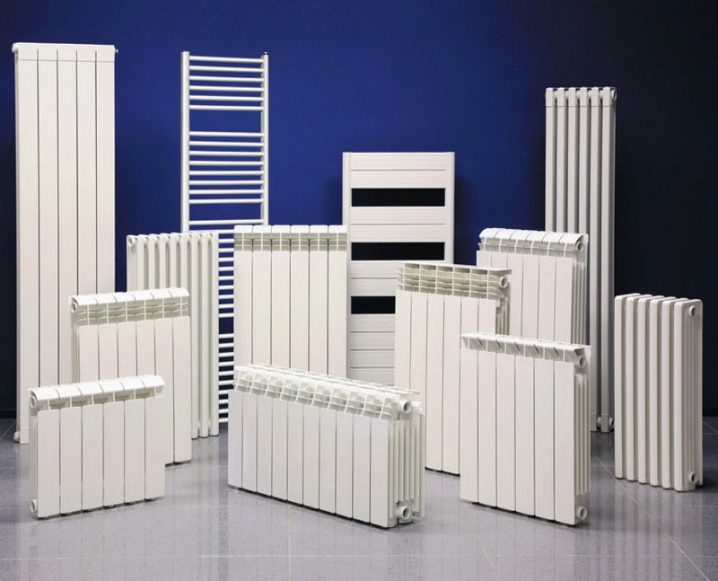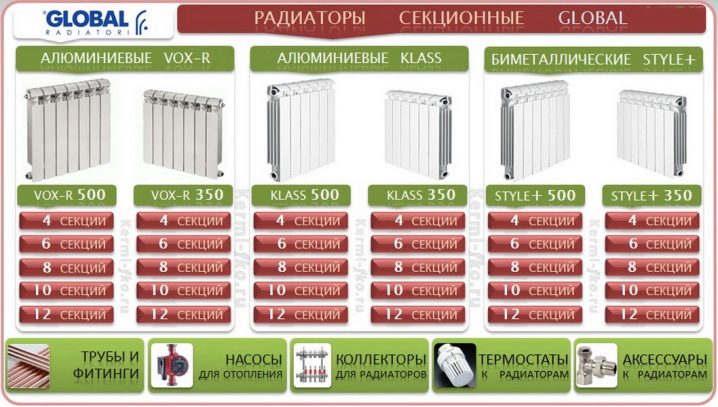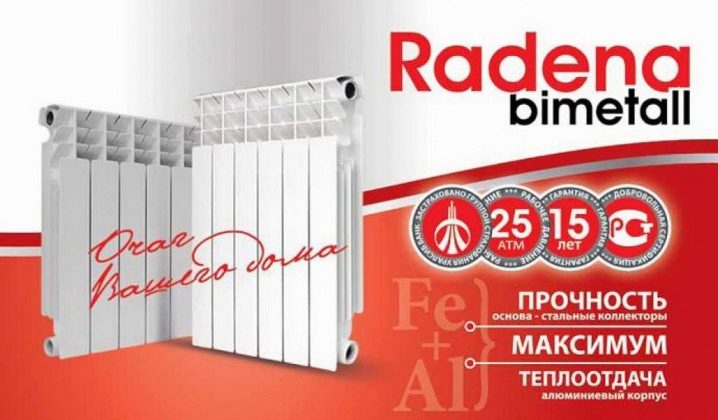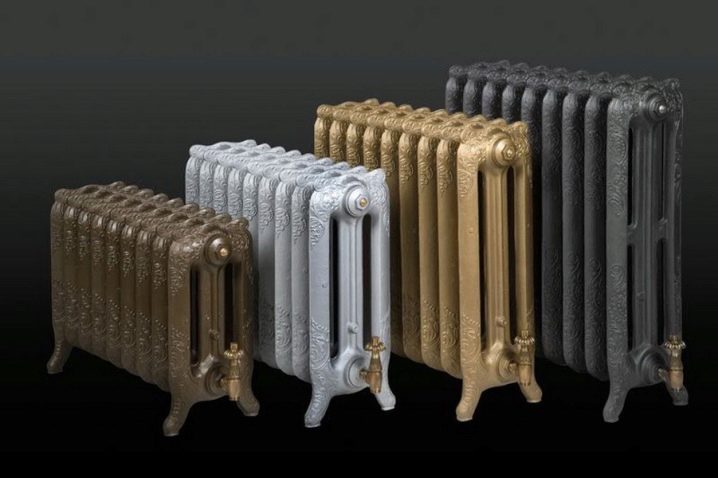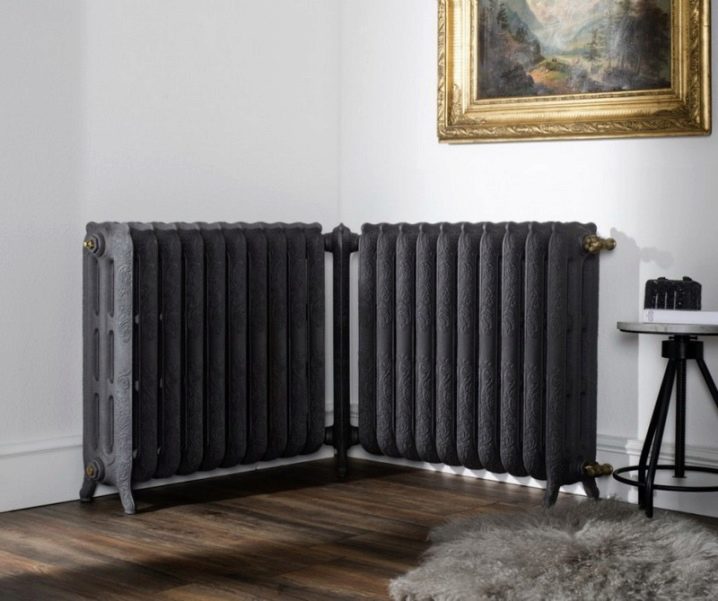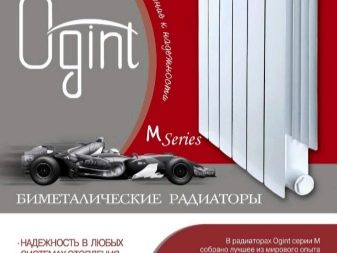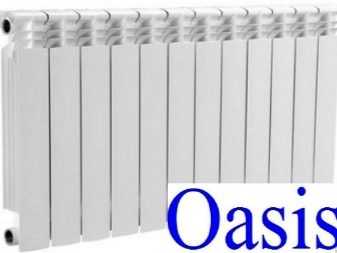Criteria for the selection of radiators
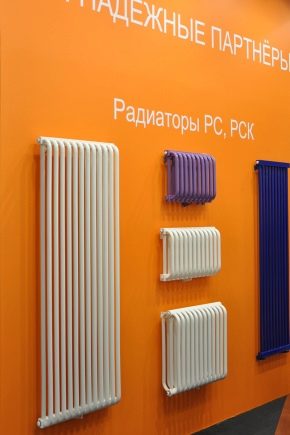
With the onset of the warm season, it's time to think about the efficiency of the heating system. If it requires replacement, summer is the best time for installation work. At the height of the heating season to replace the radiators will not work. In order not to be mistaken with the choice, before buying it is necessary to study the possibilities of heating systems and the criteria for selecting radiators.
Special features
A radiator is a device for the radiation and convection of heat in the air, a heat exchanger. The main task of the radiator is to dissipate heat throughout the entire volume of the room.
In addition, it performs several functions:
- Creates a thermal barrier.In standard apartments and private houses, radiators are installed near window openings and balconies. This arrangement provides maximum protection from the cold and uniform distribution of heat in the room. If you move the radiator to the wall, the air around it will be warm, and closer to the window and the balcony door will be colder.
- Maintains a stable indoor climate. The intensity with which the radiator generates and gives off heat is not constant. It changes with changes in ambient temperature. The colder it is on the street, the more active the heating system is. This ensures a comfortable air temperature in the house.
- Dries the air. Thanks to this function, bacteria, mold and fungus do not form on the walls, floor, between the floors. A favorable environment for bacteria is dampness. Radiators eliminate it by heat radiation and convection.
This is not always a plus. For example, in the bathroom the microclimate is damp and air drying is necessary, but in the living room, where the air is already dry enough, humidification may be needed.
Not all radiator functions are listed. Sometimes they are used in domestic situations that are not provided by the manufacturer (for example, to speed up the drying of things after washing, warm up the box with children's plasticine).Sometimes they play the role of a decorative element in the design of the room. Of course, here we are not talking about standard models, but about design products that are made in small batches or in single copies.
Heating radiators are used in apartments, private houses, industrial premises and even in cars. They are of two types: static and mobile. The static include centralized heating systems and autonomous systems. They pass around the perimeter of the entire house and are connected to a heat source. Their more common name is batteries. Heating batteries were invented in Russia almost 150 years ago. They differed from modern devices in large dimensions and shape. They made these “hot boxes” of cast iron. The source of heat was hot water.
The materials from which the batteries are made have changed, and the source of heat is still water. Water heating systems are considered traditional. They are used in apartment and private homes. Centralized heating is important for apartment buildings, and autonomous for private houses. In the first case, all the apartments are served by one boiler room.In the second case, the house of several rooms is heated by an electric boiler.
The system is simple enough: hot water circulates through the pipeline, giving off heat energy to the air. In the process of heat transfer through radiators, the water cools down, returns to the heating device, and the cycle repeats.
Inside the heated room (usually in a private house) are temperature sensors. They make it possible to control the temperature of the radiators. The intensity of the radiators in the apartment is regulated by the heat-conducting organization.
Advantages of water type radiators:
- Efficiency. The fluid inside the system passes in a closed circle. It takes less time and energy to reheat. This saves and finances on system maintenance and natural resources.
- High efficiency. Water radiators warm the room well in any weather. They give about 70% of the heat.
- The ability to regulate the level of heat in different rooms. Thanks to the configuration of the radiators, you can control the temperature of the air in the individual rooms. So, in the living room a higher temperature is comfortable, and in the bedroom you need fresh and cool air for good sleep.
- Silent operation of the system. Radiators are made from materials with high noise absorption. Even the quiet murmur of water inside the pipes is not audible.
- Centralized heating systems in the apartment are independent of electricity.
- An opportunity to mount system of open type and hidden system of heating.
- Subject to partial repair.
- Service life - 15-20 years. This is not a maximum indicator, but an average value. If the installation is substandard, the service life is reduced. If the work is done professionally and the materials are selected correctly, the system works longer.
Cons of water radiators:
- Complicated installation system. Each element must be properly installed in its place. On this depends the safety and quality of the radiator.
- It is difficult to cope with the installation. It is necessary to include in the installation costs the payment for the services of professional installers of heating systems.
- Water freezes at low ambient temperatures. If part of the pipeline in a private house runs underground or on the street, it must be further warmed. Frozen water puts pressure on the pipes from the inside, which can lead to rupture.
- Over the years, deposits and scale build up inside the radiator. The thicker the layer, the worse the water goes through the pipes and the lower its efficiency.
- Pipes can leak if the material is corrosive.
- Massive construction. So that the water circulates silently inside the radiator, it has thick walls and pipes. They have to be hidden behind decorative screens so that radiators do not spoil the interior.
Alternative heating option for a private house - gas radiators. These are compact devices that heat the room with air currents. The device of a convector radiator on a gas basis simple and convenient for connection. They can be installed in any room. The advantages of gas heating systems are that they are as economical as possible with high efficiency. This means that the heat exchanger tells the room all the heat that is released when the gas is burning. In addition, gas equipment is equipped with a security system. In the event of malfunctions, the gas supply is turned off.
Disadvantages of the systems: the equipment is difficult to mask, one convector heats one room, installation requires caution.
Static radiators of a new generation may be electric or infrared, but their device is significantly different from the design of batteries.Most often mounted hidden electric radiators (plinth or vnutripolnye). Sometimes a full floor heating system is used as heating. Mobile radiators are portable devices that work on the basis of electricity. According to the principle of operation, four types of devices are distinguished: heat fans, convector, oil, infrared.
How heat fans work is clear from the name. Heating the ten inside the radiator housing converts electrical energy into heat. The fan creates air flow, due to which heat is distributed around the room. Convector radiators are not equipped with a fan. Warm and cold air mixed by the laws of physics in action. Often convectors are equipped with temperature sensors and an automatic shutdown system. When the air warms up to the set temperature, the device turns off. When the temperature drops, the device starts up again.
Oil radiators are distinguished by the fact that the heating element is immersed in an oil medium or antifreeze liquid. This contributes to the uniform distribution of heat.Also, the air is not too dry, as when using heat fans, and oxygen is not burned. Due to this, less dust is generated in the room. Oil heaters are sealed and open. Mineral oil cannot be poured into hermetic ones, and there is a special compartment in the open ones. Not only oil can be used as a liquid. There are special non-freezing compositions and even devices with compartments for distilled water.
Infrared systems are the safest. They transform electrical energy into infrared rays of the spectrum that is not harmful to the human body. In nature, the source of such heat is the sun. The principle of operation of infrared systems borrowed from him: the radiator heats not air, but reflective objects. According to scientific research, heating sources with the radiation of the correct spectrum have a beneficial effect on living organisms. They ionize the air, eliminate microbes and unpleasant odors, increase immunity. Infrared equipment is more expensive than a conventional heater.
According to the method of installation, electric radiators are wall-mounted, floor-standing, built-in, ceiling.
Pluses of electric radiators:
- Convenient dimensions. The heater can be as big as a fireplace portal, or as small as a shoebox.
- Mobility. The device is easy to move from place to place. Often the device is equipped with small wheels so that it can be easily rolled from one room to another.
- No installation required. The appliance plugs into a wall outlet, like a kettle or hairdryer.
- Simple control. The mode of operation is configured using a pair of buttons.
- Accuracy to the degree. The presence of the display and sensors helps to set the desired heating temperature.
- Sealed safe case. Heating elements are protected from ingress of water, debris, flammable substances.
- Beautiful appearance. The electric heater does not need to be similar to a battery. Many manufacturers offer original solutions for the interior.
Minuses:
- Not able to replace the central heating system. In many regions of our country, mobile radiators are only auxiliary devices.
- Electricity is the most expensive source of energy. The more heaters in the house, the greater the amount to pay for electricity.
- One heater - one room.Do not heat the whole house with one device unless it is a small studio apartment.
- Uneven heat distribution. As you move away from the heater, the air gets colder.
- The surface of the radiator is hot. It can not be left in the nursery unattended, cover with cloth and try to disguise.
- Service life is less than that of water or gas equipment.
- Convectors dry the air, contribute to the appearance of dust.
The source of heat is not the only criterion for the classification of radiators. There are varieties of batteries on the materials of which they are made, in shape and size, in terms of heat transfer efficiency and appearance.
Materials
Stuff always matters. The service life of the product, its resistance to stress, weight, cost, and flexibility to decorative processing depend on it. It even affects the quality of heat transfer. Manufacturers of heating radiators use metals and polymers (PVC, polypropylene).
Cast iron
Cast iron battery - the prototype of all modern devices. Heating systems from this metal have been used for a century and a half and have not yet lost their positions.
Benefits:
- Strength.The walls of the battery can withstand high pressure and water temperature up to 150 degrees. They are not afraid of water hammer (pressure surge). The outer surface is not subject to mechanical damage (no scratches, dents).
- Heat resistance. Maintain water temperature up to 150 degrees. It is more than boiling point.
- Corrosion Resistance. The metal layer does not thin out over time.
- Compatible with other metals. Part of the pipeline can be made from other materials.
- High heat dissipation.
- The ability to accumulate heat. If the water supply is suspended for any reason, the cast iron batteries will give off heat to the room for a long time.
- The service life of 30-50 years.
- Amenable to complex decorative processing. For example, figure cutting on metal.
Disadvantages:
- Great weight. It is more difficult to mount the system, it requires a strong attachment to the wall.
- Impressive parameters. Do not hide such a radiator in a wall or floor. All cast iron batteries are in the form of "accordions".
- The system is heated for a long time when the heat is first turned on.
- No temperature controller.
- Inside on the porous surface of the walls a raid forms. It slows down the flow of water and heat transfer.
- It is necessary to care for the outer surface, to update the paint or blackening.
- Suitable only for water heating.
Steel
Steel radiator profile technical characteristics inferior to iron. It withstands less pressure, and the temperature inside the battery should not exceed 120 degrees.
Benefits:
- Heats up quickly.
- Possesses the increased thermolysis due to the fact that walls are thinner, than at cast-iron batteries.
- Low weight. This simplifies installation, you need less fasteners to fix the device.
- Variability of shapes and sizes. You can make an embedded system.
- You can install temperature sensors and other automation.
- The steel case is suitable for water, gas and electric radiators.
- Beautiful and modern appearance.
Disadvantages:
- Steel is not resistant to rust. Because of this, its service life is reduced to 10 years, and the risk of leakage increases.
- Does not withstand strong water hammer.
- Welds - weak points of the system. They are the first to flow.
- Poor quality coating will flake off after a few years.
- Not recommended for installation in a room with centralized heating.
Aluminum
Light products for combining thermal radiation and convection. They are produced in two ways: casting and extrusion. Casting products are stronger due to the presence of silicon in the composition. Their dimensions may vary as needed. Extruded options are cheaper. Although they also contain silicon, the products are less durable. Their size is standard. Add or reduce the number of sections can not be.
Benefits:
- low weight;
- efficient heating of the room (high heat transfer coefficient);
- minimum time of heating the radiator;
- Aluminum is not afraid of rust and a decorative coating does not leave it for a long time;
- the presence of thermostats helps to save energy and maintain a comfortable level of heat in the room;
- suitable for all heat sources (water, electricity, gas);
- modern design;
- low cost.
Disadvantages:
- Deformed by mechanical damage (shocks) and hydraulic surges.
- The metal is oxidized upon contact with water. It is necessary to adjust the pH balance within normal limits.
- Water entering the aluminum heating system must pass through a filter.Garbage damages the inner walls of the product.
- At the joints of parts leakage may occur.
- Cannot be combined with other materials (in particular, with copper).
Copper
This metal is used less often than others because of its price and softness. However, it is excellent for installing a heating system, since it warms up faster than other materials, and its heat transfer coefficient is higher. In terms of efficiency, it is 2 times as high as aluminum products, in 5 steel, in 6 - cast iron. Only silver is more efficient in heat dissipation, but the cost of such a heating system would be prohibitively high. By itself, the metal is soft, so the copper pipe is strengthened with fins from steel or other metals.
Combined products are called bimetallic. Combinations of steel and aluminum, copper and aluminum, copper and steel, steel and cast iron are effective. The most common type of bimetallic products - aluminum-steel.
Benefits:
- Long service life. The average is 20 years.
- High efficiency (good heat dissipation). Some materials reinforce the merits and close the disadvantages of others.
- Durability and weight, convenient for installation.
- Modern form and variable appearance.
Disadvantages:
- high price;
- steel parts are subject to corrosion;
- different metals have different thermal expansion coefficients.
However, thermal expansion of metals is minimal when compared with polymer radiators. Polyvinyl chloride and polypropylene are used to manufacture polymer cases. Both materials are necessarily reinforced with fiberglass, aluminum, foil or polyethylene. A reinforcing layer is needed to minimize expansion and stretching of plastic radiators with increasing temperature. And if the expansion is not so noticeable, then the stretching can be 15 mm per 1 m of the pipe.
Advantages of polymer radiators:
- Resistant to rust and deposits inside the battery.
- Durable. They are not afraid of blows from the outside and hydraulic blows from the inside. Such strength is achieved due to the plasticity of the material, a large thickness of the walls and the reinforcing layer.
- Withstand high pressure and temperature up to 100 degrees.
- Lightweight.
- Installation is simple, it can be done on its own.
- All trimming of polymer products can be used to create useful small things in the house (hangers, baskets, shelves, decor).
- Large selection of components. It is convenient to lay the heating system in difficult areas.
- The system consists of pipes with diameters of 6-7 cm and fittings, so it is convenient to make it hidden.
Disadvantages:
- installation does not require special knowledge, but you need professional equipment;
- permissible pressure in pipes is 3-5 times less than in metal products;
- cannot be combined with metal parts;
- it is difficult to mount an aesthetic-looking structure;
- service life is less than that of metal radiators.
Sizes and shapes
From the standpoint of design solutions, radiators are divided into the following types: sectional, tubular, panel. Sectional radiators are the usual "accordion" in the apartments of the Soviet and post-Soviet buildings. Cast iron "harmonicas" are more massive and relief, the distance between the sections they have more. Inside the "accordion" is a reinforcing lattice. It creates additional protection from water hammer.
The main disadvantage of this form is that it is very difficult to wash and paint such batteries. There is no way to get between sections, and their location close to the wall only worsens the situation. Modern "harmonicas" of steel and aluminum are more compact and minimalist.They have no relief. The distance between the sections is small, so the disadvantages are less noticeable. In addition, they are thinner, which allows you to make them embedded.
Plate radiator - a kind of "accordion". It consists of a single straight or curved pipe, on which metal plates are “strung”. As a rule, bimetallic products have this type. The copper pipe is equipped with steel or aluminum "fins". Their function is to distribute heat. Tubular - the name of this type speaks for itself. The battery consists of pipes (cylinders) of small diameter through which hot water circulates. In terms of efficiency, this is the most profitable type of battery.
Unlike "accordions", pipes can be located both vertically and horizontally. Various materials are used for their production: all metals, except iron, and polymers. The appearance of such pipes is more attractive, their design is more diverse, so they are more expensive. Panel batteries consist of all-metal plates with a raised surface. Their height and width are virtually identical to the typical sizes of sectional and tubular batteries, but the thickness is much less.
On the parameters height-width and thickness it is worth staying in more detail. These are the dimensions of the devices, and they are no less important than the form. Two important aspects in the operation of the system depend on the parameters. First of all, can the battery heat all the rooms to a comfortable temperature. In the second, how economical her work will be. At the same time for a comfortable temperature, the battery should give no less heat than necessary, but no more. There can be no talk of comfort in the stuffiness. We'll have to regularly air and cool the room, and this is a waste of energy.
In standard constructions radiators of the standard sizes are used. They are regulated by GOST.
For radiators of different materials, the parameters are somewhat different:
- Cast iron batteries have a height of not less than 40 cm and no more than 90 cm, the length of one section is 8-9 cm, the distance between the fittings (the places where the battery connects to the pipes) is from 30 to 100 cm. The minimum depth of the product (section thickness) is 10 cm, maximum - 20.
- The trends of modern production based on the interior design are such that the depth of the product gradually decreases, while the height and width increase.
- Steel batteries have the same height and width with a permissible depth of 4 to 11.5 cm.
- Aluminum, copper, bimetallic and polymeric products do not yet have a separate GOST. Their parameters are calculated according to the dimensions of the room.
When the size of the radiators are far from the standard. They are changed for the sake of design ideas, but at the same time carefully calculate the power and efficiency. For example, the lowest devices do not exceed 20 cm in height. But their heat transfer is not worse than that of typical products. The highest production models today can boast a height of 180 cm. This is not the limit of possibilities. To order manufacturers can produce the product up to 3 meters. The width remains variable. The narrowest serial radiators in width not more than 28 centimeters.
Finally, the thinnest models are only 48 mm thick. They are not completely flat, but for the radiator this is a minor indicator. It is possible to determine the optimal dimensions of the radiator by conducting a direct relationship between the heating capacity of the heating system and the heated volume of the room in cubic meters. The amount of heat for heating one cubic meter is the same for any room. It is 41 watts. This number must be multiplied by the volume of the room.Then calculate 15-20% of the resulting number and put them into calculations in case of severe frosts. It turns out the power of the whole radiator.
But the calculations do not end there. Given that the radiator in any case consists of segments (sections), you need to calculate their approximate number. To do this, the total power should be divided into the power of one section. For products from different materials, this power will be different.
Simplifies the task a special table and online calculators. So, with the power of 1 section of the radiator 140 W per room of 10 square meters. m is required battery of 8 sections. And with a power of 200 watts per section - just out of 5. With the increase in the floor space, the size of the heating element increases. For a room of 20 squares, you will need 16 sections with a power of 140 W or 11 sections with a capacity of 200 W. For rooms with high ceilings there is a separate label. According to her, the number of sections increases by 1 with each additional meter up. With a ceiling height of up to 3 m, you need to focus on a table for typical rooms, and with a ceiling of 3 m and above, watch calculations for non-standard layouts.
Heat transfer of different types
Water, gas and electric radiators have different capacities, and metals and polymers have different thermal conductivities.Of these indicators is the thermal power or efficiency of heating elements.
Efficiency is influenced by a combination of factors:
- Ambient temperature The power of one section in watts is registered in the technical passport of any heating device. This table with values is valid only if the necessary conditions are met: the temperature difference between the environment and the heat source must be at least 70 degrees. To calculate the exact figure, you need to use the formula: divide the temperature (inverse + flow) by 2 and subtract the ambient temperature (air in the room). The temperature of the return and flow temperature sensors show. Unfortunately, not all types of radiators have them. And the temperature in the room is easy to measure with a thermometer.
- Reduction factor This is a table value that needs to be applied to the initial indicators in the technical passport. It is important to understand that in modern heating systems often set the maximum threshold for heating - 80 degrees. And according to the formula for obtaining the cherished difference of 70 degrees, the heating temperature must be at least 100.From this it follows that the power per one section, which is indicated by the manufacturer, does not correspond to reality. In practice, heat transfer will be less. Its exact value is calculated by a similar formula, you just need to substitute a table value.
- Radiator dimensions (S heat exchange surface). The larger the dimensions of the heater, the more it heats the room.
- Type of metal or plasticof which the radiator sections are made. There is a similar rule: heat transfer depends on the thickness of the walls of the radiator. Than they are thinner, the more heat gives the heating element. Thus, the performance of an aluminum battery is higher than that of cast iron, although cast iron is more reliable.
The need to choose heating devices is rarely arising. If there is no desire to puzzle over the mysterious formulas, and the cheat sheet will help you choose the most effective option you need. Maximum heat gives radiator with gas heating and a thin metal body. Its performance can reach 98%. That is, all the energy from the combustion of gas is converted into heat and circulates indoors.
Energy consumption of electrical devices is the highest,and lower performance - up to 85%. Finally, with average energy consumption, the lowest efficiency is in hot water heating.
Appearance
The appearance of the radiator does not so much reflect the shape as the design. A simple way to organically fit the heating system into the interior is to make it integrated or completely hidden. However, this technique is not suitable for all cases and reduces the efficiency of the system. Thermal energy is forced to overcome not only the obstacle in the form of the walls of polymer pipes and metal sections, but also the thickness of the decorative finish.
Modern design solutions make it possible not to hide radiators behind curtains and walls made from plasterboard. Their original appearance is to ensure that the functional device has become one of the decorations of the room. There are six proven ways to make a radiator a piece of furniture: unusual material, complex shape or texture, bright color, pattern, decorative screen. Cast iron, copper and plastic battery is no surprise. What really looks unusual is stone, wood and glass. And they are a full-fledged part of the design, and not an overlay screen.The heating element is embedded inside the case of reconstituted stone, tempered glass or durable wood.
In addition to the beautiful appearance, the advantages of such devices are few. They are ten times more expensive than usual, and their performance and service life are not the most impressive. Such models are complex in technical performance, so their cost is also very high for heaters, even if they lose to boring harmonica batteries in all parameters, except aesthetic.
The form can be divided radiators are not several groups:
- narrow and high;
- flat;
- round and oval;
- streamlined;
- curly.
Products of complex geometric shape combined with an interesting texture and color are suitable for decorating rooms in a minimalist style. It is appropriate to look in the modern interpretation of the classics, in the industrial interior. It can be a highlight of the situation in which a large number of devices for life is collected: techno, hi-tech. Figured products are focused on brighter and more daring interiors. It is important to use them in the rooms of children and teenagers, in creative living rooms, in the kitchen or in the bathroom, since the form often reflects the functions of the room or sign objects.
For example, it can be a wall radiator in the form of an anchor, a hanger, a guitar, a paper clip, a woman’s silhouette, a fireplace portal.
The configuration of some radiators implies additional functions. For the bathroom are relevant batteries with the function of the towel or with built-in shelves for small items. For the hallway above the radiator is convenient to have shelves for drying shoes. In the kitchen, the radiator can be equipped with a slate for notes, hooks for tacks. Inside the studio apartment radiators-partitions will be useful, which in addition to the main function, help to divide the space into zones. In the children's room, the device can be supplemented with a magnetic lettering board or a beautiful night illumination.
These little things slightly increase the cost of the product, but really come in handy in everyday life. So, towels in the bathroom dry faster without excessive moisture in the room, and children sleep more calmly in the light of a night light.
Texture
Not all types of radiators can have a relief surface. In a natural way, the textured pattern can be applied only to cast iron products. For other types of decorative covers are provided.But the variety of retro-cast iron radiators pleasantly surprises. What is important, with the acquisition of a beautiful appearance, these products do not lose their effectiveness. Depending on which pattern is engraved on sections of the radiator and in what colors the metal is painted, such a product repeats the patterns of classic French, English, German and Russian radiators of the nineteenth century.
The most diverse styles: baroque, modern, industrial, romanticism, a la rus, provence. Properly selected texture can be the very little thing in which lies the art of creating a cozy and beautiful interior. The product in an unusual color can be purchased in finished form or painted independently. In the first case, the color will be smoother and will last longer. In the second, the paint will peel off faster, but the color can be changed an unlimited number of times. For this, there are special paints for odorless radiators with a super-resistant formula. You can remove the old paint with the help of sandpaper and paint shredder (B52 and the like). Apply a new better with a special brush or spray. A curved brush helps to reach difficult-to-reach areas between sections, and the spray can provide a smooth surface without smudges.
The colors of monochrome shades (black, white, gray) are suitable for classic interiors and minimalism. So that they do not seem flat and boring, the protruding parts of the sections can be distinguished with a golden or silver spray paint. Especially beautiful is the combination of black and gold colors on cast-iron retro-radiators with texture.
Bright colors can be applied in several ways:
- Cover the wall and radiator with one color. This is an easy way to disguise a heater if it should not stand out in the interior. It is relevant for any monochromatic color of the walls: yellow, purple, pistachio, peach and others.
- Highlight the battery in a contrasting color. There is no way to hide - you need to focus. It is important to choose matching colors. For example, the yellow color of the radiator against the turquoise walls looks bright but not flashy.
It is also worth considering that the contrasting color should be repeated in other interior items, otherwise it will look inappropriate.
- Use bicolor and apply two colors at the same time. You can alternate them, perform a simple ornament, apply a pattern through a stencil. Looks good combination of different shades of the same color.For example, light blue pattern on a dark blue background, and vice versa.
- Make a gradient. Here you need to use from 3 or more shades of the same color that stand one after another or through one in the palette. It is important to make a smooth transition from one shade to another.
Sometimes color is not only an aesthetic function. The use of dark and black shades significantly increases the heat transfer coefficient of the radiator. The lighter the product, the lower the coefficient. The difference can be up to 15%.
Picture
It is best to design in such a way suitable panel radiators with a solid surface. Manufacturers apply heat-resistant film on them. As a result, a bright image appears on the surface, which can be selected to order. It is almost a 3D printing, but not on curtains or photo wallpapers, but on a battery. Common themes for printing: flowers, nature, sea, animals, iconic images.
If the printed picture is too flashy, the drawing can be made independently. To do this, use stencils, stamps, brushes, spray paints. The imagination, accuracy and a little patience is useful. If artistic ability allows, the surface of the radiator can be turned into a work of art.For example, to make from it an imitation of a fireplace with live fire, to depict flowers, the sea, nature and other elements.
Mounted screens are a way to beautifully mask static heaters. The main advantage of this method, in contrast to the installation of hidden systems, is that the gratings have a perforated surface. The presence of a pattern of many holes of different shapes contributes to the fact that heat transfer is not reduced. Conversion remains at the same level as that of open heating appliances. Some screens have a solid surface. In such a case, holes are provided in their construction from the bottom, top and sides. They are made from a variety of materials: wood, glass, metal, textiles, plastic.
The design is also varied. The screen can be with UV printing of a bright pattern, with stained glass painting, in the form of a wooden cabinet, in the form of a fireplace portal or false walls.
Manufacturers
Radiators belong to the category of purchases that occur every 10–20 years. It is difficult to gain experience in this business, so as not to be mistaken with the choice. Even for a couple of years, models become obsolete, more sophisticated and effective products appear.One can imagine how outdated the notion of a quality product will be in 10-15 years after the last purchase. In this situation, you need to pay attention to the reviews and reputation of the manufacturer.
In this case, vigilance is important. There are Italian, German, French radiators on the market of heating systems, but most of them have an indirect connection with European manufacturers. Often the country is mentioned only in order to gain the confidence of the buyer, in fact, the "French" heaters are assembled at a factory in China, immediately after the "Italian" on the same, still "hot" equipment.
Chinese products may be nice in their own right. It is bad in them that they are sold at the same price as the original foreign products. It turns out that for the name of a well-known brand you have to overpay twice. If you buy products from China, then such that the plants produce under their own trademarks. With the same quality, it is much cheaper. This is confirmed by user reviews.
Based on the same reviews, you can make a rating of the best manufacturers, which should be paid attention first of all when buying a radiator.When compiling the rating, the division by the source of heating and the materials from which the products were made were not taken into account. The opinion leader is the Italian company Global. It manufactures products solely on its own capacities, does not use Chinese factories and branches in other countries. Covers 30-40% of goods on the market.
Global radiators are distinguished by their enhanced construction. It gives the chance to use them in systems of the centralized heating with a high pressure and for service of autonomous systems. Products meet all quality requirements: durability, reliability, heat resistance. As a bonus - the aesthetic appearance of products with Italian taste. All this can be purchased at a low and medium price per section.
The second popular brand of Italian origin is Radena. The company does not make loud statements about its uniqueness and leadership, but makes quality products at an affordable price. For Russian users, it has earned the confidence of being durable, resistant to hydraulic shocks and stable in operation. Sira is a more ambitious Italian brand. Produces radiators for 50 years.Despite the fact that most of the models are produced in Chinese factories, the products meet the expectations. Sira seeks to preserve the traditions of quality production, introducing new equipment and technology. The results of their experiments, the company gives a guarantee of 20 years.
Guratek is a German manufacturer specializing in cast iron radiators. It produces classic sturdy products, the main feature of which is design. The problem of large weight products Guratek solved with the help of stable legs. Thanks to them, lace and textured retro-radiators made of cast iron take the form of decorative ornaments. Products are available in eight colors. This is enough to fit them into a variety of interiors.
Cheap such a home decoration is difficult to call. Price per section - from 4000 rubles, not counting the components and installation.
The Guratek range is complemented by a less pretentious assortment of German manufacturer Kermi. For half a century, Kermi has been supplying the markets of the whole world with products of various capacities, configurations and designs, united by a common feature - quality. It is confirmed by a twenty year warranty period.In no way inferior to Germany Switzerland in the face of the company Zehder. Her horse is radiators for autonomous heating systems in a private house. Differ in small dimensions, high efficiency, simple design and quite good warranty period.
The budget products of Chinese manufacturers are in demand. For example, Ogint or Oasis. When purchasing imported products, it is important to understand that they are primarily designed for operation in other weather conditions and taking into account other quality standards. The design of the heating system in our country can be radically different, and it will not be easy to adapt some models of radiators for Russian realities. It is also important to think in advance whether it is possible to quickly and efficiently repair the system in case of a breakdown, or if you have to wait for months for original parts under warranty from another country.
There are fewer problems with domestic manufacturers. Products are cheaper because metallurgical production is established in Russia, and there is no need to include customs duty in the price of goods. Products are designed to work in Russian weather and utility conditions.In the event of a breakdown, parts will be found quickly, and repairs will be carried out by employees of the nearest service center. Positive reviews on domestic radiators are also enough. Often for the quality and reliability of the positive reviews of the company Apriori, Elsoterm, Royal Thermo, Rifar, Farral. Separately, it is worth mentioning steel design products company "Sunerzha".
How to choose?
When choosing a suitable radiator, you need to rely on two main criteria: the type of room (apartment or private house) and the type of heating system (centralized or autonomous). In apartment buildings, a centralized system prevails. For a radiator, this means a constant high pressure in the system and water is not of the best quality. Impurities in water are of two types: chemical and solid (grains of sand, debris). Chemistry is harmful because it causes oxidation reactions on the inner walls of the device. This leads to the formation of plaque, which impairs heat transfer. Grains of sand and coarse debris act on the walls as abrasives. Over time, the surface abrades, the pipes become unusable. Danger is represented by possible hydraulic jumps. From them diverge welding seams and joints.
These negative factors do not affect the cast iron and bimetal radiators. They are durable, withstand great pressure, their inner surface has a protective layer against corrosion and scratches. Designer heating elements also look beautiful. But for the beauty and quality will have to pay the appropriate amount. Radiators from steel and aluminum are not suitable for the apartment. Steel is not strong enough to withstand water hammer. Aluminum is oxidized due to impurities in water. In private homes, an autonomous system is more common. It is considered sparing in all respects: the pressure is less, the acidity is lower, there is constancy in the work. All types of metal and polymer products are suitable here. When purchasing European equipment, it is important to assess the compatibility with the heating system in a particular house (power, filters, installation).
Choosing Russian products, you should pay attention to the warranty period and repair conditions, technical documentation, the composition of the kit. In the complete set, besides the radiator, valves, plugs, gaskets, plugs and brackets are desirable.
The necessary characteristics of the equipment are recommended to be written out on a sheet before going to the store.Get a checklist to verify compliance with the radiator requirements.
How to choose a radiator, see the next video.
